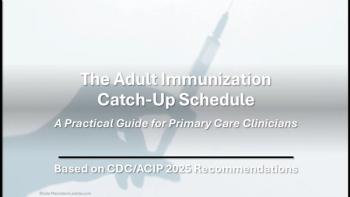
CA-MRSA Is More Likely in Some Populations
CHICAGO -- Community-acquired methicillin-resistant Staphylococcus aureus (CA-MRSA) may target certain vulnerable populations and does not displace community-acquired methicillin-sensitive S. aureus.
CHICAGO, May 29 -- Community-acquired methicillin-resistant Staphylococcus aureus (CA-MRSA) may target certain vulnerable populations and does not displace community-acquired methicillin-sensitive S. aureus, researchers found.
In a study of Chicago's Cook County Hospital system, the 6.84-fold increase in community-acquired MRSA from 2000 to 2005 occurred on top of a stable rate of nonresistant S. aureus infections.
Risk factors for community-acquired MRSA in the study included recent jail time, African-American race, and residence at public housing complexes in one area of the city, found Bala Hota, M.D., M.P.H., of Rush University Medical Center and John H. Stroger, Jr., Hospital of Cook County, and colleagues.
"Understanding the epidemiology of community-acquired MRSA is critical for developing control measures," they wrote in the May 28 issue of Archives of Internal Medicine.
So the researchers monitored patients seen at the hospital and its more than 100 associated clinics serving the urban poor in Chicago for S. aureus infections isolated from soft tissue, abscess, joint, or bone specimens.
The population served during the six-year surveillance period (2000 to 2005) was at high risk-62% African American, 5% incarcerated in the prior year, and 6% public housing residents.
Community-acquired infection was defined as a culture-positive, community-onset S. aureus infection in a patient without healthcare exposures.
Among the 2,346 patients, 41.4% had community-acquired MRSA and 58.6% had community-acquired methicillin-susceptible S. aureus.
The researchers found:
- Incidence of community acquired-MRSA infections rose from 24.0 cases per 100,000 people in 2000 to 164.2 per 100,000 in 2005.
- Incidence of nonresistant, community-acquired staph infections was relatively stable at 90.7 cases per 100,000 people in 2000 and 121.9 per 100,000 in 2005.
- Most infections were seen in outpatients or nonhospitalized patients seen in the emergency department (55% to 56% for both types of infection).
- The mortality rate was higher for methicillin-susceptible infections (5 per 1,000 versus 1 per 1,000 for community-acquired MRSA).
In multivariate analysis, risk factors for MRSA skin and soft tissue infections included:
- Residence in a particular cluster of public housing complexes (odds ratio 2.50, 95% confidence interval 1.25 to 4.98, P=0.009).
- Incarceration in the prior year (OR 1.92, 95% CI 1.00 to 3.67, P=0.05).
- African American race or ethnicity (OR 1.91, 95% CI 1.28 to 2.87, P=0.002).
However, crowded living conditions did not appear to be a significant factor even in a univariate analysis (P=0.08 for trend). Older age was actually protective (OR 0.89 for each decade increase, 95% CI 0.82 to 0.96, P=0.004), as was Hispanic race or ethnicity (OR 0.61, 95% CI 0.37 to 0.99, P=0.048).
"Why CA-MRSA has emerged at such a rapid pace remains unclear," Dr. Hota and colleagues wrote.
Part of the explanation may be that community settings related to the risk factors found in this study promote transmission of infection, they said.
Prisons, for example, replicate the conditions-large at-risk populations and long length of stay-that made hospitals and long-term care facilities "epicenters" for transmission long before community-acquired MRSA became a concern, they added.
Public housing may have the same mechanism and also more frequently attracts individuals who have been incarcerated. They cited one survey of public housing residents that showed that 29% of respondents had been incarcerated or were expecting someone to arrive home from jail or prison.
While these high-risk groups could serve as a focus for MRSA control measures, the researchers concluded, "Whether strategies directed at prevention of transmission in these settings will be effective in slowing the emergence of community-acquired MRSA remains to be determined."
It is also unclear whether the findings would be generalizable to other settings since the study was done in a single healthcare system in one city.
Newsletter
Enhance your clinical practice with the Patient Care newsletter, offering the latest evidence-based guidelines, diagnostic insights, and treatment strategies for primary care physicians.















































































































































































































































































































